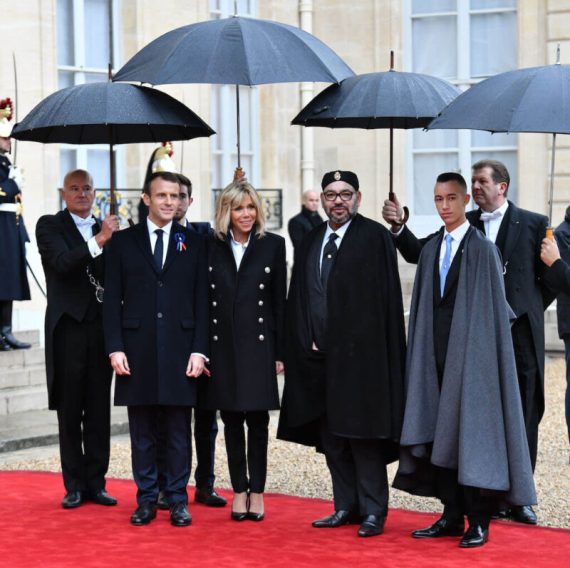W
ho was behind the release of thousands of confidential Moroccan documents, many of which are now being highlighted in the international press to support corruption charges against current and former MEPs at the center of Qatar Gate and Morocco Gate?
It is a mysterious case. In 2014, a “hacker” by the name of Chris Coleman published thousands of documents on Twitter and various social networks, many of them classified as “confidential” or “secret,” as well as a huge mass of correspondence, emails, and archives of all kinds exposing in great detail the way the DGED (General Directorate of Studies and Documentation, the Moroccan foreign intelligence agency) and the Moroccan Ministry of Foreign Affairs worked.
There was everything: reports on everything and everyone, studies, correspondence, requests for instructions, and above all the names of the DGED’s regular collaborators. Not the usual police snitches, but prominent members of society, Moroccans and foreigners, journalists, politicians, experts, senior officials, members of civil society, etc. Lists of gifts and generous sums of money paid to some politicians, closed this incredible inventory.
For example, the names of Pier Antonio Panzeri, the former Italian MEP, and his assistant Francesco Giorgi, both currently imprisoned in Brussels for the Qatar Gate and Morocco Gate affair, appeared in these documents without anyone taking notice.
Another example was Fight Impunity, the association created by Panzeri in Brussels, and which is now at the center of the scandal, which was exposed as the brainchild of the late Moroccan ambassador to the European Union, Menouar Alem, in a confidential report sent to the Moroccan foreign ministry in 2012.
At the time, namely 2014, a few people quickly accused “Chris Coleman” of being a forger and laughed at this “Marocleaks,” before retracting. The Moroccan state at no time questioned the authenticity of this immense documentation while certain media outlets accused neighboring Algeria of being behind this giant leak.
But who is this “Chris Coleman”? Who is behind this computer genius who managed to pump almost five gigabytes, and surely more, of data from the servers of the DGED and the Moroccan diplomacy to disperse them on the web? It is a question that has been asked a thousand times. Some have claimed that it was indeed a “hacker,” others have presented him as an ex-head of the DGED who broke with his management, and there are even those who have seen the hand of another Moroccan secret service to discredit the DGED, headed since 2005 by Mohamed Yassine Mansouri, a friend of King Mohamed VI. In short, a war of services.
There has always been a lot of imagination in the world of spies. In this case, however, the truth is simple if we carefully scrutinize the ups and downs of relations between Morocco and some countries considered “allies.”
The person who chose the name “Chris Coleman,” named after the former Welsh international footballer, is apparently a soccer fan, but he is not a hacker hiding somewhere in a dingy office surrounded by computer screens. And Algeria, which is hated by some Moroccans, is absolutely not involved in this affair, as some have tried to accredit.
The structure – a state one – behind “Chris Coleman” and which has exposed Moroccan counterespionage and diplomacy is probably the French DGSE (Direction générale de la Sécurité extérieure).
What follows is the result of several weeks of investigation and cross-checking that reveal that an underground and very unfriendly war has been going on for a decade, or perhaps more, between the French DGSE and the Moroccan DGED.
It all began on May 24, 2014, with an article that appeared on the Moroccan website le360. The article titled “Convocation of the French Ambassador: New Revelations” was written by Mohamed Chakir Alaoui, a former junior employee of the Agence France-Presse (AFP) office in Rabat.
Alaoui was not known in the Moroccan journalistic world, having never revealed any sensitive case. But on that day, he dropped a piece of information that would set the world on fire. “Agnès Féline,” he wrote, the “second secretary at the French embassy” is the “head of the antenna of the General Directorate of External Security (DGSE) in Morocco.”
This revelation startled the French embassy in Rabat and by extension the Parisian directorate of the DGSE. French diplomats and spies wondered how a journalist who was not an expert in the shadowy world of intelligence knew that Féline was indeed the “head of the DGSE antenna in Rabat.” At the same time, revealing Féline’s true function was tantamount to putting her in grave danger.
The French intelligence center quickly came to the conclusion that the information had been dictated to Alaoui by the Moroccan intelligence service, the only one to know Féline’s true status.
But why did the site le360 reveal the true function of a French spy? The Moroccan intelligence services were seeking revenge for a terrible humiliation suffered a few months earlier by the boss of the DST (Directorate General of Territorial Security). In February 2014, the French police sought to arrest the director general of the DST Abdellatif Hammouchi at the residence of the Moroccan ambassador to France in Neuilly-sur-Seine. A judge wanted to hear from the head of Moroccan spies after complaints of torture in Morocco filed by several French citizens, including former world kickboxing champion Zakaria Moumni. Hammouchi had to leave France in a hurry, without passing through the Parisian airports. This was a great humiliation for the head of the Moroccan secret services.
The revelation by le360 of the identity of the head of the DGSE in Rabat was therefore an act of retaliation. Féline had to be exfiltrated from Morocco in 48 hours and the DGSE has since given her a new identity.
In the world of intelligence, one does not burn an agent by delivering their name to the press. Especially if it is an official of a friendly state and ally of Morocco.
Revenge is traditionally a dish best served cold, but here, French spies did not wait long to react.
Five months later, in October 2014, the mysterious hacker appeared on Twitter. And the great unpacking began. The tweets were often written in French, but also in other languages. Sometimes even in Arabic or Portuguese. This proves that the French spies must have been having fun, especially when “Chris Coleman” took great pleasure in posing as a defender of the Polisario Front, the Sahrawi independence movement at war with Morocco in Western Sahara.
The efforts to suspend the account that was revealing Moroccan state secrets has little effect. It would reappear immediately or a few weeks later under another name and jump from one social network to another before disappearing one fine day, leaving its precious treasure buried in a corner of the vast net.
Recommended
According to what we have since learned, the decision to “punish” the DGED was taken at the highest level of the French state. The retaliation project was decided by the management of the DGSE, which submitted it to its supervisory minister at the time, the head of the defence portfolio, Jean-Yves Le Drian, who communicated it to Prime Minister Manuel Valls before the latter obtained the final green light from then President of the Republic François Hollande.
A connoisseur of France-Morocco relations obtained confirmation of this incident a few years ago from the highest authorities of the French state. It must be said that the Moroccan intelligence services have always known who was behind “Chris Coleman.” When a few weeks ago Bernard Bajolet was indicted in France for “complicity in an extortion attempt” and “arbitrary infringement of personal liberty by a person in authority” in a murky affair of swindled funds, the Moroccan press strangely seized upon this affair with great noise, even though it has no relation with Morocco.
Bajolet was the director general of the DGSE between 2013 and 2017. In 2018, in the book entitled Le soleil ne se lève plus à l’est. Mémoires d’Orient d’un ambassadeur peu diplomate (The Sun No Longer Rises in the East, Memoirs of the Orient from an undiplomatic ambassador) published by Plon, he claimed that Abdellatif Hammouchi, who had escaped France in 2014, did not deserve the Legion of Honor, the highest French decoration, awarded to him by Hollande.





